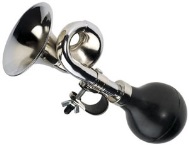 DST. Daylight Saving Time is here and begins in the wee hours of Sunday March 13th.
DST. Daylight Saving Time is here and begins in the wee hours of Sunday March 13th.
So when you turn in for bed on Saturday night, March 12th, you’ll set your clocks one hour ahead (unless you are in Hawaii, Puerto Rico, the U.S. Virgin Islands, or most of Arizona).
Over the years, there have been debates as to when and how Daylight Saving Time gained popularity and why it has stuck all these years. It was originally proposed by Britain’s Parliament in 1908; it was mostly believed it would conserve energy. 100 years ago, during World War I, many nations including the U.S., wanted to reduce lighting demand and save coal for the war effort, so it was actually observed year-round! But that didn’t last.
Contrary to popular belief, farmers didn’t start Daylight Saving Time and have not been big fans. Just as our society shifts an hour of light out of the morning hours, farmers have less daylight to handle morning tasks like getting their wares to market. Those charged with handling livestock like dairy cows say it’s difficult for the clock-averse animals to adjust.
Fiddling with our clocks can create more than clock confusion. This annual adventure in altered timekeeping also means we’ll all lose an hour of sleep, and many of us feel the effects for a few days afterwards. And that can affect balance as well.
One way to strengthen and maintain your balance is to take full advantage of the benefits provided by an extra hour of evening daylight. Use the time to practice movement with light to moderate exercise rather than becoming sedentary. It’s a great opportunity to go for a restful (or brisk) walk, or do something outside that you cannot do as easily when the weather turns dark. So if you want to practice your golf swing, take up tennis or update your garden, this may be the perfect time.
Another way your balance may benefit is using this time to avoid stimulating substances such as alcohol, caffeine and tobacco. We have more choices than ever before with alternatives that may keep us feeling more even during the day.
Maintaining solid sleep habits can also go a long way to support your balance. Not only are healthy sleep routines important during this week, but all year-long.
- Catch a few winks early. To minimize the impact of the time change, practice making gradual adjustments. Try advancing your bedtime by just a few minutes so your body and brain feel well rested.
- Siestas can be a good thing. A short nap may do you good and recharge your batteries, as your internal clock begins to adjust on its own over several days.
- Discover how much sleep you really need. Everyone needs a different amount to be well-rested and maintain healthy balance. Our sleep requirements are unique and change with age. You might try sleeping without an alarm on weekends to see how you feel and when you wake up on your own.
For more ideas for restful sleeping tips, read this article on WebMD.
Daylight Saving Time seems to create a debate as old as time. Many people would like to see just one time and stick with it. Yet others like the idea and feel we are all owed an extra hour of evening light in the spring. One thing is for certain – time will ‘fall back’ to standard time again on Sunday, November 6, when DST ends.
For more about the history of DST, you may also enjoy:
Spring Forward: The Annual Madness of Daylight Saving Time, by Michael Downing
Seize the Daylight: The Curious and Contentious Story of Daylight Saving Time, by David Prerau






Leave A Comment